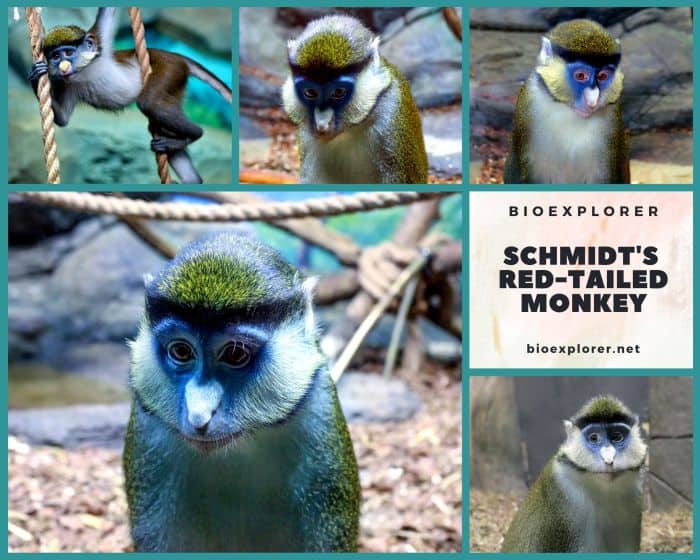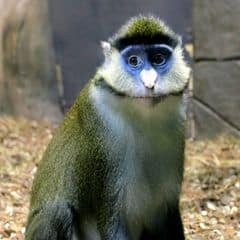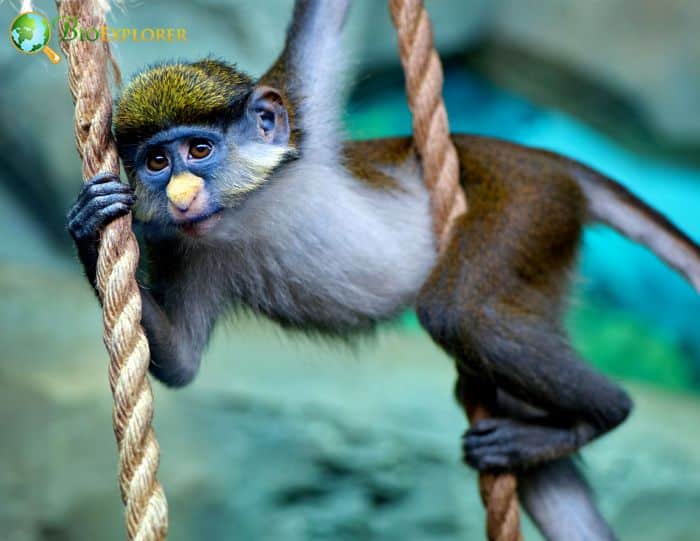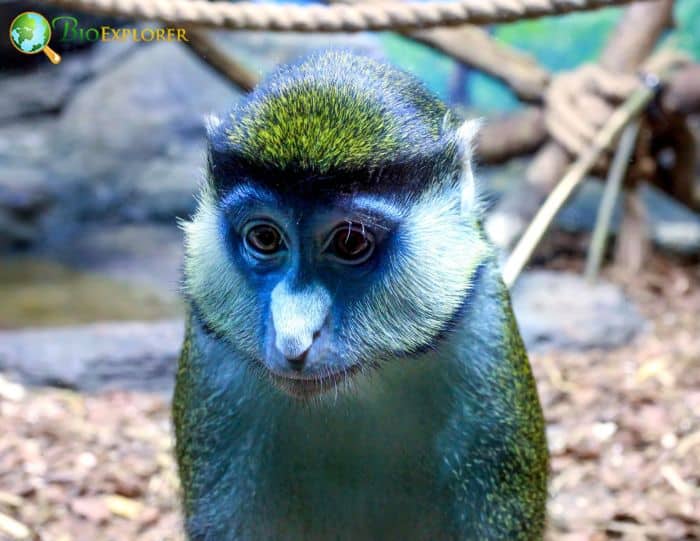
| Animalia | Primates | Cercopithecidae | Cercopithecus | Cercopithecus ascanius |


- Common Names: Schmidt’s Red-tailed Monkey, Black-cheeked White-nosed monkey, Red-tailed guenon, or Schmidt’s guenon
- Taxonomy Classification Year: 1799
- Monkey Size: 41 to 47.5 cm (16 to 19 in)
- Skin Color(s): Olive Green, red, or Gray, orange
- Habitat: Forest, rainforest
- Diet: Herbivorous
- Native Countries: Angola, Cameroon, Central African Republic, Democratic Republic of Congo, Kenya, Rwanda, Sudan, Tanzania, Uganda, Zambia, Burundi
Black-cheeked White-nosed Monkey Distribution
Schmidt’s Red-Tailed Monkey Characteristics

The Schmidt’s red-tailed monkey[1], also called the red-tailed guenon, Schmidt’s guenon, or black-cheeked white-nosed monkey is a primate species in the Cercopithecidae family.
- Red-tailed monkey has several unique features. The species gets its name from its long red tails, which can be up to twice the length of the rest of its body.
- While other subspecies of red-tailed monkeys may have different facial coloring, Cercopithecus ascanius have a bluish-gray face, white cheeks, and a heart-shaped white nose that resemble mutton chops.
- In addition, its body has a white chest and a reddish-gray back.
What Do Schmidt’s red-tailed monkeys Eat?
The black-cheeked white-nosed monkey consumes these organic sources but not limited to[¶]:
- Lyre Gurnard (Piper)
- Earleaf Nightshade (Solanum um mauritianum).
- Shiny-Leaf (Rhamnus prinoides)
- Jasmine (Jasminum)
- Num-Num (Carissa spinarum)
- Triangle Tops (Blighia unijugata).
- Largeleaf Lantana (Lantana camara).
- Cape Cheesewood (Pittosporum um viridiflorum).
- Coffee (Coffea)
- Treebind (Cissus)
- Broom Cluster Fig (Ficus sur).
- Fragrant Dracaena (Dracaena fragrans).
- Hill Raspberry (Rubus niveus).
- Wild Coffee (Psychotria)
- Pokeweed (Phytolacca)
- Fig (Ficus)
- Chinese Banyan (Ficus thonningii).
- Calabash Nutmeg (Monodora myristica).
- Horsewood (Clausena anisata)
- Lagos Rubbertree (Ficus lutea).
- Hackberry (Celtis)
What Eats Schmidt’s red-tailed monkeys?
Among other monkey species, Leopards (Panthera pardus) are the most prime predators of Schmidt’s red-tailed monkey [§].
Schmidt’s Red-Tailed Monkey Facts

- The Schmidt’s red-tailed monkey is named for its red coloration on the underside of its tail, as well as the bicolor coloration of its tail as the reddish color increases from the base to the tip.
- It has a large cheek pouch holding almost as much food as its stomach. This adaptation allows it to practice retrieval and withdrawal methods while feeding.
- The species is arboreal and diurnal, although adults often descend to the forest floor to search for fallen fruit.
- Studies have shown these monkeys prefer to eat fruit at night while foraging for leaves and insects in the morning.
- Schmidt’s red-tailed monkeys dwell in single-male groups consisting of one adult male, around 10 females, and their young.
Suggested Reading: Monkey Species List
Cite This Page
APA7MLA8Chicago
BioExplorer.net. (2025, May 28). Schmidt’s Red-tailed Monkey. Bio Explorer. https://www.bioexplorer.net/animals/mammals/monkeys/schmidts-red-tailed-monkey/.
BioExplorer.net. "Schmidt’s Red-tailed Monkey" Bio Explorer, 28 May 2025, https://www.bioexplorer.net/animals/mammals/monkeys/schmidts-red-tailed-monkey/.
BioExplorer.net. "Schmidt’s Red-tailed Monkey" Bio Explorer, May 28 2025. https://www.bioexplorer.net/animals/mammals/monkeys/schmidts-red-tailed-monkey/.











